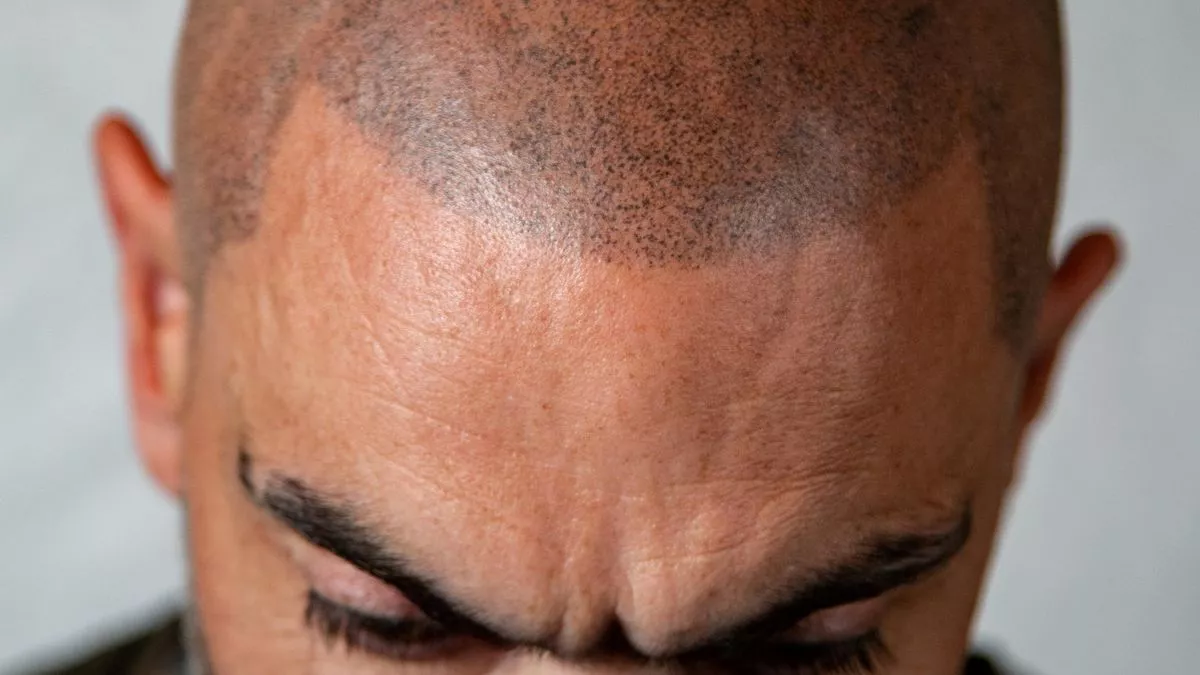Hair loss and receding hairlines are common concerns that affect millions worldwide, impacting self-esteem and confidence. As individuals seek effective solutions, hair replacement procedures have gained popularity for their potential to restore a fuller, natural appearance. But a crucial question many ask is, does hair replacement work for receding hair? This comprehensive guide aims to shed light on this query, exploring how Hair Replacement in Abu Dhabi techniques operate, their effectiveness, and what you can expect when considering this treatment.
Understanding Hair Loss and Receding Hairlines
The Causes of Hair Loss
Hair loss can occur due to various factors, including genetics, hormonal changes, aging, stress, and lifestyle choices. The most common form of hair loss in men and women is androgenetic alopecia, often characterized by a receding hairline or thinning crown. Understanding the root cause is essential to determine the most suitable treatment approach.
Recognizing a Receding Hairline
A receding hairline typically begins at the temples, gradually moving backward and creating an M-shaped pattern in men or diffuse thinning in women. This pattern can significantly influence appearance and self-confidence. While hair loss can be progressive, many seek solutions that provide a natural-looking restoration.
How Hair Replacement Works for Receding Hair
The Concept of Hair Replacement
Hair replacement involves restoring hair in areas affected by loss or thinning. It aims to recreate a natural hairline and density that blends seamlessly with existing hair. Modern techniques utilize advanced technology and artistry to ensure results are both aesthetically pleasing and durable.
Techniques Used in Hair Replacement
- Hair Transplantation: Transferring hair follicles from a donor area (usually the back of the head) to the receding areas. This method is widely regarded for its natural results.
- Non-Surgical Methods: Options like scalp micropigmentation or hair fibers can temporarily improve appearance but may not provide a permanent solution.
- Hair Systems or Wigs: Custom hairpieces designed to match natural hair, offering immediate results but requiring maintenance.
Effectiveness for Receding Hair
When performed by skilled professionals, hair transplantation can effectively address receding hairlines by providing natural, permanent results. The success largely depends on factors such as hair donor quality, scalp condition, and the technique used. The transplanted hair typically continues to grow naturally, offering a long-term solution.
Why Hair Replacement Is a Viable Solution for Receding Hair
Natural-Looking Results
One of the primary advantages of hair replacement, especially through transplantation, is achieving a realistic and natural appearance. Modern surgical techniques allow for precise placement of hair follicles, mimicking natural hair growth patterns.
Long-Term Benefits
Unlike temporary solutions, hair transplantation offers a permanent fix, with transplanted hair follicles resistant to hair loss. Over time, the results can improve as the transplanted hair establishes itself.
Boost in Confidence and Self-Esteem
Restoring a receding hairline can significantly enhance self-image, making individuals feel more confident in personal and professional settings. The psychological benefits are often profound.
The Process of Getting Hair Replacement
Consultation and Planning
A comprehensive consultation is essential to evaluate the extent of hair loss, scalp condition, and overall suitability. During this phase, expectations are discussed, and a personalized treatment plan is developed.
The Procedure
- Preparation: The scalp is prepared, and donor areas are identified.
- Extraction: Hair follicles are carefully removed using techniques like Follicular Unit Extraction (FUE).
- Placement: The follicles are transplanted into the receding areas, following a natural hairline design.
- Recovery: Post-procedure care involves managing swelling, scabbing, and ensuring proper healing.
Post-Procedure Care and Results
Following the procedure, patients are advised on scalp care, avoiding strenuous activities, and protecting the scalp from sun exposure. Results typically become visible over several months as transplanted hair begins to grow, with full maturation seen around a year.
Factors Influencing the Success of Hair Replacement
Donor Hair Quality
A robust donor area with healthy, dense hair significantly enhances the chances of successful transplantation and natural results.
Extent of Hair Loss
The degree of receding hair influences the number of grafts needed and the complexity of the procedure. Smaller receding areas tend to have higher success rates.
Surgeon Expertise
The skill and experience of the practitioner play a vital role in ensuring natural, symmetrical, and long-lasting results.
Patient Commitment
Adherence to post-operative instructions and proper scalp care are crucial to optimize outcomes and ensure the longevity of the transplanted hair.
Common Myths and Facts About Hair Replacement
Myth: Hair Replacement Looks Artificial
Fact: With modern techniques, hair replacement results are highly natural-looking, mimicking the original hair growth pattern.
Myth: Hair Transplants Are Painful
Fact: Advances in anesthesia and minimally invasive procedures have made hair transplants relatively comfortable and well-tolerated.
Myth: Hair Transplants Require Frequent Maintenance
Fact: Transplanted hair is permanent and typically requires minimal ongoing maintenance.
Myth: Hair Loss Will Continue After Transplant
Fact: Transplanted hair is resistant to hair loss, but other areas may still be affected, requiring additional treatments or procedures.
Is Hair Replacement Suitable for Everyone?
Candidates for Hair Replacement
Most individuals experiencing receding hairlines or thinning hair are suitable candidates. A thorough consultation assesses scalp health, donor hair quality, and expectations.
Limitations
Individuals with extensive hair loss, poor donor areas, or underlying scalp conditions may have limitations and should discuss alternative options with their specialist.
Conclusion: Does Hair Replacement Work for Receding Hair?
In summary, hair replacement—especially through advanced transplantation techniques—can be highly effective for receding hairlines. When performed by experienced professionals, it offers natural, permanent results that can significantly enhance appearance and self-confidence. While individual factors influence outcomes, the overall success rate is promising for those seeking a long-term solution to receding hair.
Frequently Asked Questions (FAQs)
1. How long does it take to see results after hair replacement?
Results typically start to become visible around 3 to 4 months post-procedure, with full maturation of transplanted hair occurring approximately after 12 months.
2. Can hair replacement be combined with other treatments?
Yes, combining hair transplantation with medical therapies like minoxidil or finasteride can help maintain existing hair and enhance overall results.
3. Is hair replacement a painless procedure?
Modern techniques utilize local anesthesia, making the procedure relatively painless. Some discomfort may occur during recovery, which can be managed with appropriate care.
4. Will transplanted hair match the natural hair in texture and color?
Yes, trained specialists match the donor hair to the existing hair in color, texture, and curl pattern to ensure a seamless appearance.







0 Comments